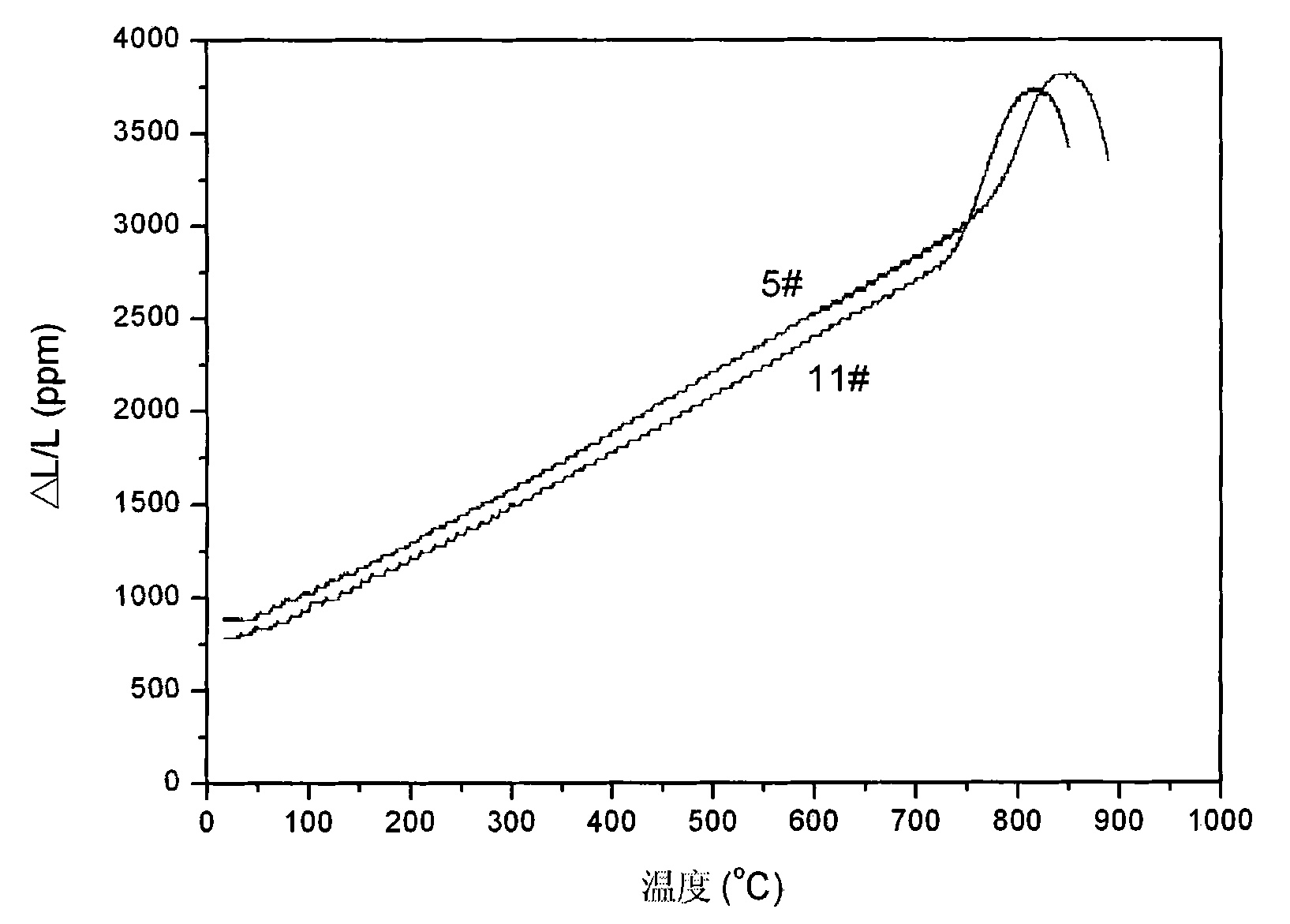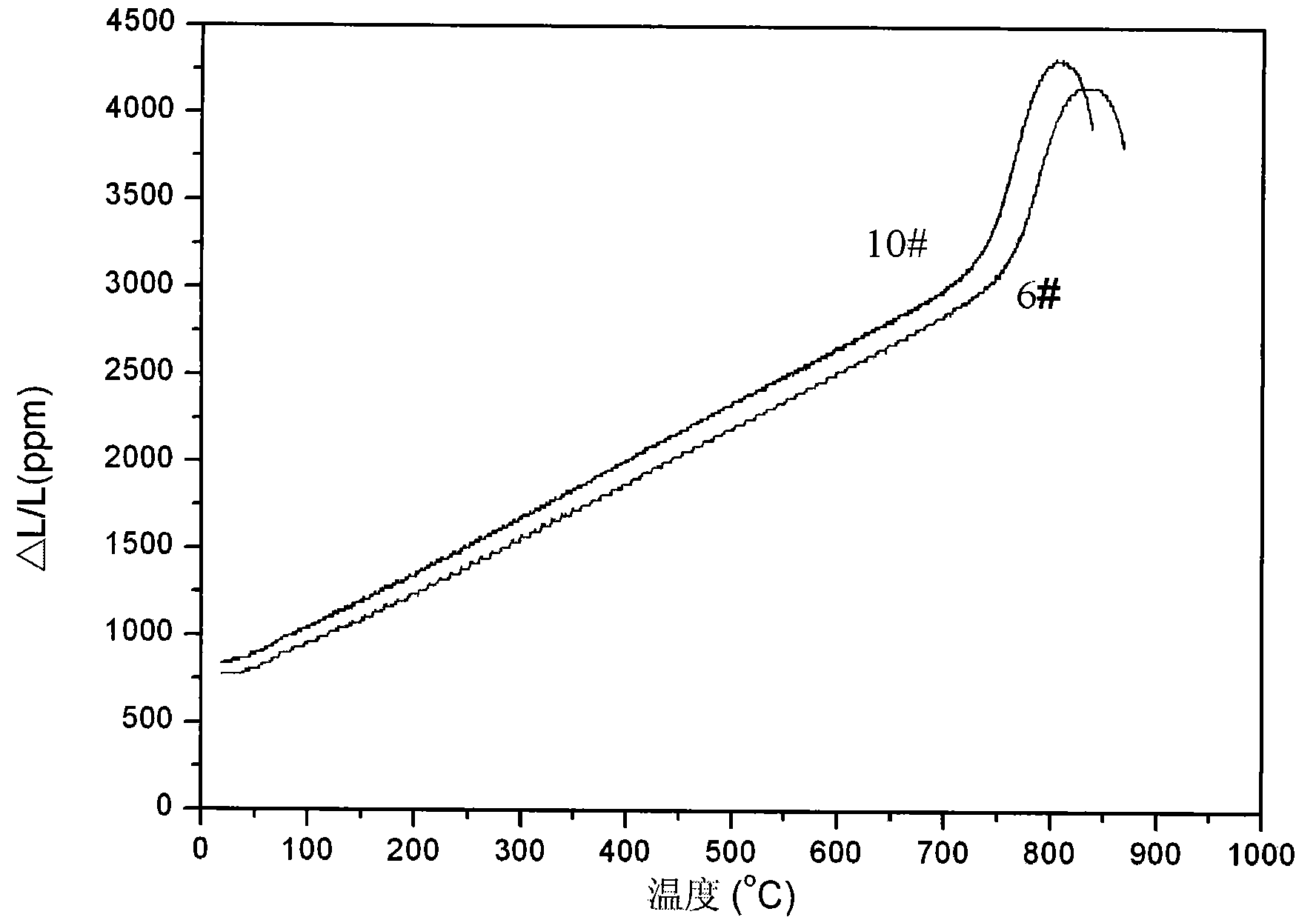The visual quality of the glass screen, that is, the lack of crystalline impurities, stones and air bubbles is very good, because defects such as tiny air bubbles, stones, stripes, surface pits, and surface
scars will cause errors in the display and affect the quality of the displayed image
[0014]
Chinese patent CN200410045636.4 (authorized announcement number: CN 1275889C) describes the glass used for
flat panel displays. The composition described in the patent is produced by the overflow melting method, and all properties meet the requirements of flat panel displays. However, the above as Example Although it does not contain the heavy
metal element BaO, which is harmful to the environment, the listed
clarifying agent Sb 2 o 3 and As 2 o 3 Because it does not meet the requirements of modern
environmental protection and future development direction, it is no longer suitable for TFT-LCD substrate
glass production[0015] Although the clarified
chemical composition of the aluminoborosilicate glass described in
Chinese patent CN 101208276A does not contain elements harmful to the environment, the examples listed in the patent contain MgO, a substance that easily causes glass
devitrification, resulting in the
liquidus of the glass temperature rise
[0017] The element BeO contained in the formula of the alkali-free glass described in
Chinese patent CN 101186438A is unfavorable to raising the strain point of the glass, and the substance of the
clarifying agent is not clearly pointed out, and the formula also contains ZrO which is unfavorable to the density of the glass 2
[0018] Although the aluminoborosilicate glass with high
elastic modulus and its application described in Chinese patent CN 101117270A has also added the substance Y that can improve the elastic modulus 2 o 3 , but its formula composition also includes BaO, a heavy
metal element that is harmful to the environment, and the
thermal expansion coefficient of the glass is quite different from that of the
thin film transistor material. During the heat treatment, the glass plate will warp
[0019] The formula composition of alkali-free aluminoborosilicate glass and its application described in Chinese patent CN 1525945A contains a large amount of MgO which is easy to cause
devitrification of the glass, which makes the
liquidus temperature of the glass rise, which is not conducive to the production of the substrate , and the thermal expansion coefficient of the listed glass composition is quite different from that of the
amorphous silicon thin
film material, and it contains BaO, a heavy
metal element that is harmful to the environment.
[0020] The formula composition listed in the TFT substrate glass described in Chinese patent CN 101066836A contains V which is harmful to the environment 2 o 5 , and the heavy metal elements BaO and La 2 o 3 , Sb 2 o 3 Not good for the environment, and its density is too high
[0021] Chinese patent CN 1445186A describes Al 2 o 3 The content is too low, which is not conducive to improving the strain point of the glass, SiO 2 If the content is too low, it is not conducive to
glass forming, and its density is too high, the thermal expansion coefficient is too high, and the thermal expansion coefficient difference between the
amorphous silicon film material is large
[0031] Although the
high strain point glass described in the Chinese patent CN 101243018A has a
high strain point, the examples listed contain a large amount of
rare earth element La 2 o 3 , while the
rare earth element La 2 o 3 It is very likely that the
fluorescence effect will occur in a certain
wavelength range, especially the density of the glass will be increased, and the price is very expensive, so it is not suitable for the preparation of TFT-LCD substrate glass
[0032] The high strain point glass described in Chinese patent CN 1902138A contains P which is unfavorable to the glass strain point 2 o 5 At the same time, it leads to a decrease in the strength of the glass and a decrease in
chemical resistance, and the thermal expansion coefficient of the listed formula composition is quite different from that of the
amorphous silicon thin
film material, so it is not suitable as a TFT-LCD substrate glass.
The strain point of these glasses is about 660°C, so they have excellent
heat resistance, but these glasses have different thermal expansion coefficients and densities, and the 1737 glass substrate does not meet the requirements of the modern
environmental protection market, while
Eagle XG glass has obvious The higher liquidus temperature increases the
energy consumption of
glass production and preparation. The purpose of the present invention is to provide a glass substrate suitable for preparing displays without alkali metals, which not only meets the performance requirements of the modern market for
environmental protection, but also meets the requirements of environmental protection in the modern market. Ensure that production
energy consumption is reduced as much as possible without affecting various performances, and meet the requirements of
energy conservation and environmental protection in the modern market
 Login to View More
Login to View More 


